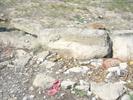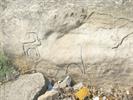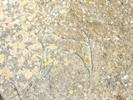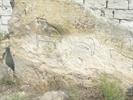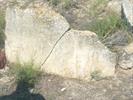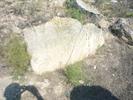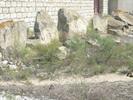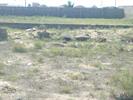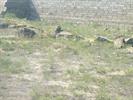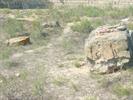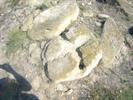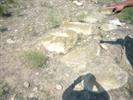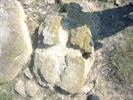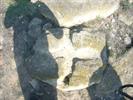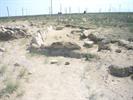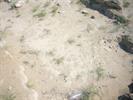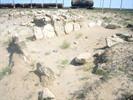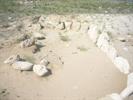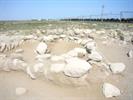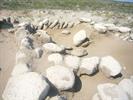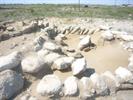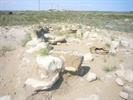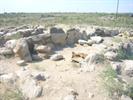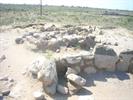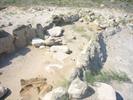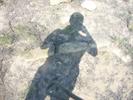Cart ruts are not the only ancient monuments in Absheron. There are also some ancient stone circles and burial mounds that are endangered. Near the village of Shuvalan & Dubandi, which are also on the Absheron Peninsula, there are some fascinating stone formations. At one site, the circle is attached to several foundations consisting of smaller square and rectangular rooms. These stone circles typically have a diameter of approximately 35m and stand about a meter high. If you examine the boulders closely, you can find petroglyphs, especially depictions of rams, carved on the inner surfaces of the circle. Once again, these mysterious monuments are strikingly similar to those found in Malta. What were they used for? How were they built? Some researchers suggest that these megalithic sites were once prehistoric temples or dwellings.
Even though sites containing cart ruts, stone circles and burial mounds also provide important evidence of ancient civilization, they are seriously being threatened by privatization and the resulting building construction, urban development, quarrying, vandalism and agricultural practices.
Many questions about the past remain unanswered: How can it be that Azerbaijan and these faraway areas in the Mediterranean have such similar monuments? How did ancient people in Azerbaijan have the same building technology as cultures that were thousands of kilometers away?
These stone circles and cart ruts suggest that the Absheron Peninsula was once a thriving population center that was connected to a seafaring Neolithic culture that thrived in the Mediterranean. From about 10,000 to 8,000 BC, the Black and Caspian Seas may have been connected to each other, providing a waterway for early explorers going both to and from the Mediterranean. Early seamen could have migrated along coastlines and waterways connecting the Mediterranean, Aegean, Marmara, Black, Azov and Caspian.
If you're planning a trip to Azerbaijan you may be interested ▶ Azerbaijan highlights - For those who prefer to go unbeaten path, to explore less visited places and check national charisma of this small country in Southern Caucasus on the edge of Europe.





